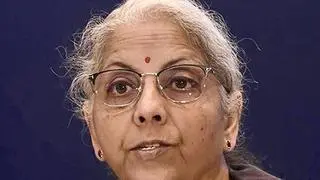A bulk of India’s energy requirement is imported. Be it crude oil or coal. As the Planning Commission points out, the energy needs for a faster economic growth will have to be “met in an environment where domestic energy prices are constrained and world energy prices are high and likely to rise further.”
Imports to increase
Since India’s domestic energy supplies are limited, imports will only increase. The Planning Commission projects import dependence on oil to increase from 76 per cent in 2010-11 to 80 per cent by the end of the 12th Plan. Import dependence on natural gas is projected to increase from 19 per cent to 28.4 per cent during the same period, while in the case of coal, it will go up from 19.8 per cent to 22.1 per cent in 2016-17.
A falling rupee and prospects of rising energy prices add to the problems of the policy planners. Ensuring energy security is a must, especially if the country is to get back on to a higher growth trajectory. Also, large sections of the population are still without adequate access to energy.
Plan paper
The Planning Commission’s approach paper on the 12th Plan says: “If energy were plentifully available in global markets at affordable prices, large energy imports may not present serious problems, although even in those circumstances problems of energy security would remain. In fact of course, energy prices are rising globally and imports will be expensive. This underscores the need for moderating the growth of energy demand by achieving higher levels of energy efficiency while also increasing domestic supplies of energy as much as possible. Energy prices have a crucial role to play in achieving both objectives.”
The following section traces the developments over the last 20 years in the energy sector — petroleum, coal and power.








Comments
Comments have to be in English, and in full sentences. They cannot be abusive or personal. Please abide by our community guidelines for posting your comments.
We have migrated to a new commenting platform. If you are already a registered user of TheHindu Businessline and logged in, you may continue to engage with our articles. If you do not have an account please register and login to post comments. Users can access their older comments by logging into their accounts on Vuukle.